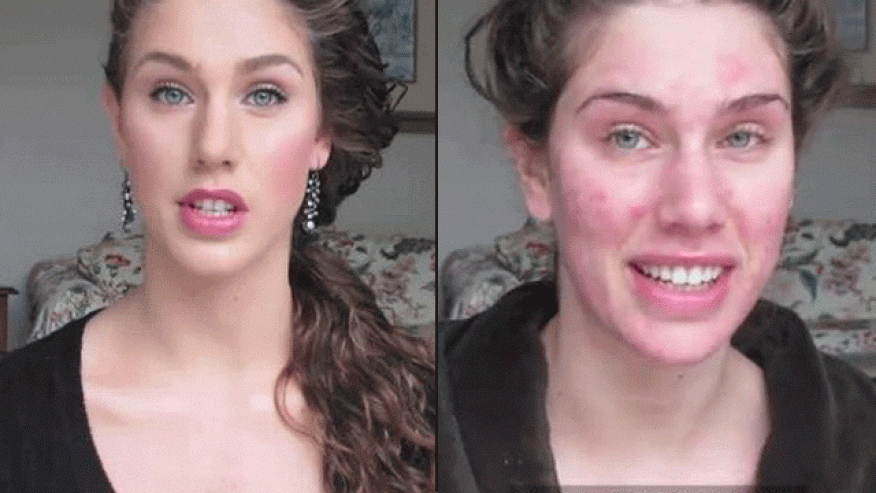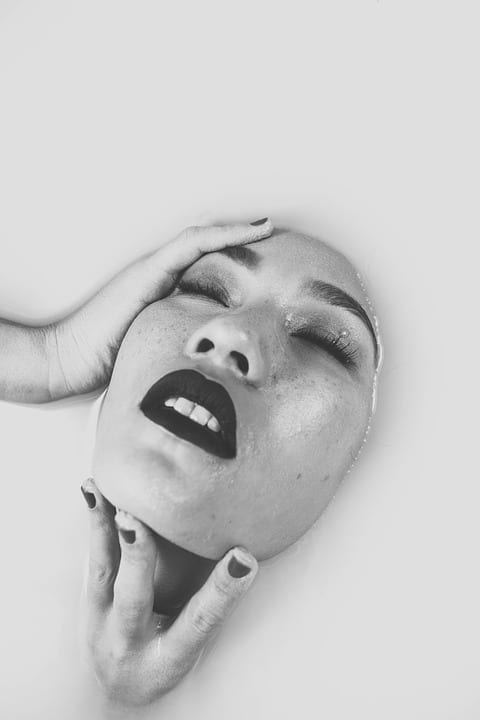Oh, sometimes life can be so unfair. Just when you’ve made peace with the laugh lines and wrinkles of your aging skin — it’s turned on you. Now your face is breaking out!
Maybe it’s a crop of those whiteheads you thought you left behind in high school. Or maybe it’s hot flushing and painful red bumps. Maybe it’s adult acne, and maybe it’s rosacea. With either one, you’re not alone. Adult acne and rosacea are two of the most prevalent and chronic skin disorders facing adult women.
Acne
Simply put, acne is a disease of the skin and oil glands. But it’s no simple matter for the roughly 17 million Americans who have it or the nearly 80 percent of us who will develop some form of it in our lifetime. In addition, women from ages 25 to 40-plus are one of the fastest growing groups of acne patients, dermatologists say.
Acne encompasses a range of conditions from simple whiteheads and blackheads to more severe cysts and solid masses of tissue called “nodules,” with plain old pimples in between.
In his book, “How to Wash Your Face,” (Simon & Schuster, 1999, $25), Dr. Barney Kenet says, “Acne is distressing at any age, but in adult females it can create a level of self-consciousness that interferes with personal and professional relationships.
Indeed, adult-onset acne is a problem uniquely wrought from our westernized, late-20th century, go-go society. As career pressures and family obligations mount, women find breakouts becoming more and more common. According to some experts, acne occurs in about 50 percent of upwardly mobile women.
Acne can flare up at any time in a woman’s life — even in women who had clear skin as teens. So what causes it?
That’s the million dollar question. No one knows for sure what causes acne in adult women but hormone levels and stress are two big factors. You can also add in cosmetics and leave-on hair care products like conditioners and gels — mousse is the safest. Touching your face with your hands and contact friction from things like telephone receivers and chinstraps on bicycle helmets may also contribute to the problem.
What about diet? Didn’t our mothers warn us about eating potato chips, chocolates and pizza?
Outdated thinking. In most cases, diet is not an issue — and neither is a lack of cleanliness. In fact, scrubbing your face — particularly with abrasives — can cause even more damage.
It really is a myth that acne is caused by dirt. The truth is, you simply couldn’t clean you face enough to prevent acne. Excessive cleansing and scrubbing is not the answer. By their nature, acne treatments and medications are very drying to the skin. So cleansing really has to be very gentle or the skin can get chapped.
For occasional mild outbreaks of acne, women taking birth control pills may want to talk with their gynecologist about switching to a Food and Drug Administration-approved pill with a higher level of estrogen. They don’t work miracles but can be beneficial.
For more serious cases, many dermatologists prescribe low-level doses of oral antibiotics taken over the course of several weeks or months. The idea behind prescribing antibiotics is this: Bacteria naturally live in your skin. When these bacteria get off balance — for whatever reason — acne can flare up. The antibiotics help get the bacteria back in balance and reduce the inflammation. This treatment is usually combined with a topical cream or creams, as well.
Acne is not a curse. If you take an aggressive stand early on you can prevent years of both physical and emotional acne scars.
Rosacea
Some people give rosacea cute tags like “The Curse of the Celts” because it is thought to be more predominant in folks with fair skin. Others call it “The Blight of the Baby Boomers” because the average age of onset is mid-40s. By any name, this chronic inflammatory skin disorder is definitely not cute.
Mostly women between the ages of 30 and 50 suffer from rosacea. It develops gradually over time, worsens in stages and doesn’t go away on its own.
Early on, rosacea is characterized by frequent flushing or reddening of the skin, which is caused by inflamed blood vessels and hair follicles. This flushing sensation feels hot, uncomfortable and tingly — much like a flush from anger or embarrassment.
As rosacea develops, the flushing is accompanied by painful red bumps called “papules” and whitish pus bumps called “pustules,” as well as web-like formations of enlarged blood vessels. Untreated, rosacea can eventually cause raised masses of skin called “nodules,” and in its last stage it can cause the nose to take on a bulbous appearance — like the late comedian and actor W.C. Fields.
Rosacea is somewhat of a mystery to us because we don’t know exactly what causes it. To the average person, it can look a lot like acne. But there are real differences. For example rosacea doesn’t produce blackheads and whiteheads. Also, controlled sun exposure can be beneficial for folks with acne but it’s not good for anyone with rosacea because the heat can cause the skin to flush.
In fact, some say exposure to the sun may be at the root of this skin disorder. “Dermatologists think this is a sun-related disorder because we almost never see it in patients without sun-damage to their skin,” says Dr. David J. Leffell, a dermatologist who has written the book “Total Skin“.
“It makes sense that fair skin is more susceptible to this disorder,” says Leffell. “The fairer your skin, the less pigment it has and the more damaging the sun’s rays. We’re probably seeing an increase in the number of rosacea cases because there’s more sun hitting the earth than ever before.”
Another contributing factor may be skin mites, which naturally live in face hair follicles, says Leffell. When the mites clog up the follicles, they can cause inflammation, which can, in turn, trigger a flare up.
Folks at the National Rosacea Society in Barrington, Illinois, say environment can play a big role in triggering flare-ups as well. They blame an extensive list of factors, such as extreme weather, exercise and lift-and-load jobs, chronic coughing, caffeine withdrawal, hot baths and saunas, alcoholic or hot beverages, and high emotions, like stress, anger and embarrassment.
In addition, they say diet and certain foods also may trigger flare-ups — yet another factor that makes rosacea different from acne. These foods include yogurt, sour cream, cheese (except cottage cheese), soy sauce, liver, yeast extract (bread is OK), broad leaf beans and pods (like lima and navy beans, and peas), eggplant, avocados, spinach, citrus fruits, tomatoes, bananas, red plums, raisins, figs, chocolate, vanilla, vinegar, spicy and hot foods.
Rosacea, while not yet curable, is controllable with oral prescription medications and topical creams. And when it comes to washing this delicate skin, the key, too, is to use gentle products.
“Bland is good,” says Leffell. “Wash with warm water and a gentle, nonsoap product. Avoid using hair and skin care products containing alcohol because it dilates the blood vessels. Only use products that are hypoallergenic and noncomedogenic, which means they don’t cause blackheads.”
Remember, rosacea can often be mistaken for acne. It is very important to have this condition diagnosed and treated by a physician because many forms of acne treatment won’t work for rosacea — and in some cases can actually make it worse.






Be the first to comment on "Acne and Rosacea"